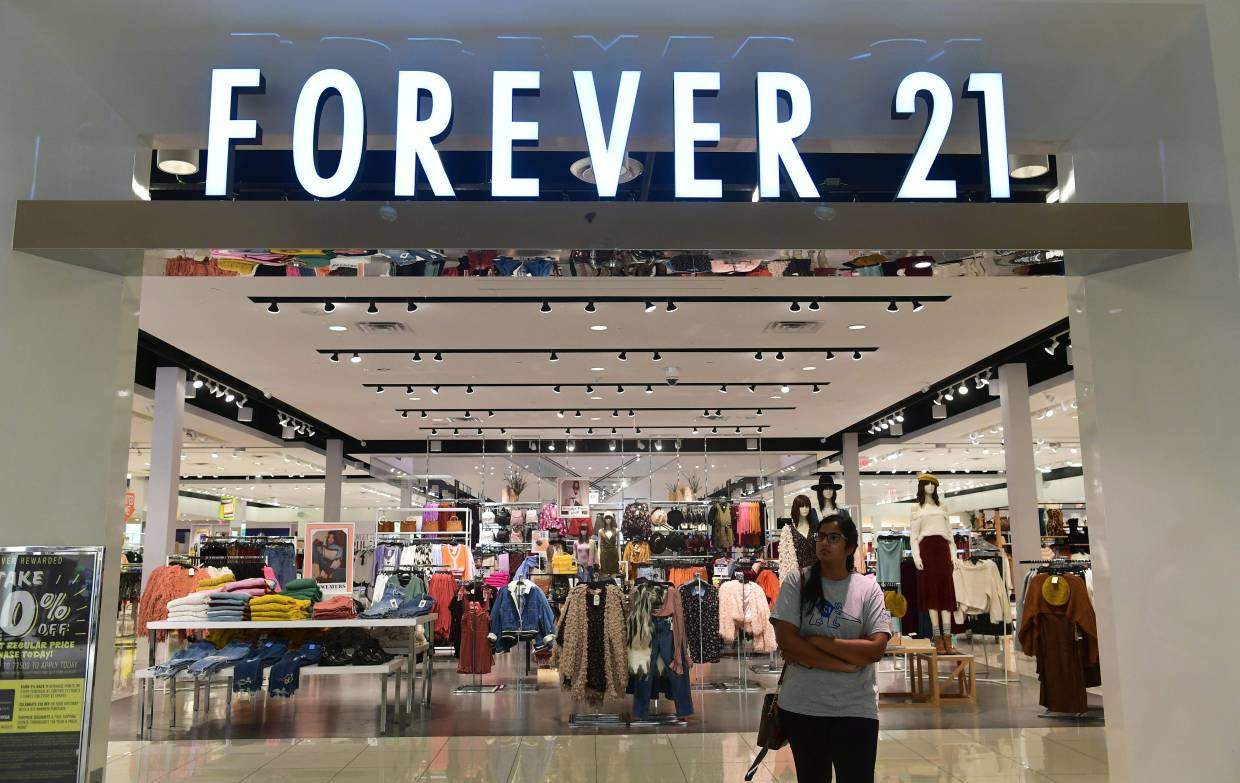We all know about Forever 21. Claimed to be the global teen population’s favorite, we may have also shopped and flaunted some cool clothing from it. Well, currently, the brand of net worth 5.9 billion dollars is in troubled waters. It has not only filed Chapter 11 bankruptcy protection but has decided to close about 350 of its stores across Europe, China, Japan, and the U.S. While it is expected for businesses to confront and tackle cut-throat competition, what exactly went wrong with Forever 21? With the rise of online retailers, is it the beginning of the end of retail stores? Let’s do a recap of the rise and fall of Forever and see how other brands are affected by the surge in the virtual market.
A Timeline of the Rise and Fall of Forever 21: Will this end as the rags-to-riches-to-rags-again tale?
The Dream
- Like any business, the story begins with an idea, a dream, and an inspiration!
- Husband and wife, Jin Sook and Do Won “Don” Chang arrived in the U.S from South Korea to fulfill their entrepreneurial dream.
- But the road was not an easy one! New arrivals in the capitalist country, the couple had to work as a janitor and a coffee server for the first 3 years.
- A general observation led to a billion-dollar company: Don realized that people with the “nicest cars” were all in the garment industry. (He quoted in an interview for The Los Angeles Times in 2010).
- The year was 1984: taking a 900 square foot area, the couple opened their first store named Fashion 21 in Los Angeles.
The Rise
- The brand took flight in no time: In the first year itself, it earned 700,000 dollars with the founders going on a growth spree of opening new stores every 6 months.
- Fashion 21 got rebranded as Forever 21: because, why not?
- 1989 witnessed the opening of Forever 21’s first store in Panorama City, California.
- The first international footprint: In 1995 it not only opened its first store outside California in the Mall of Americas in Miami, Florida but also outside the U.S. in Canada.
- 2003 saw the launch of its website.
- By 2006, the brand launched its men’s line of clothing.
- Within the next 4 years, Forever 21 had 500 stores across the U.S. while the entrepreneurs found their names in the 79th position on Forbes 400 list of the richest Americans.
- “Fast fashion”: Forever 21 paved way for a new concept via its business formula of fashionable clothes at affordable prices.
- By 2015, Forever 21 reached spiraling heights! A total of 600 stores brought in sales worth 4.4 billion dollars: the couple co-founders’ net worth hit 5.9 billion dollars.
The Fall
- But then came along H&M with bang-on competition. Within the first quarter of 2019, H&M’s net sales increased by 10%.
- After 3 years, in 2018, Forever 21 experienced downsizing and shutting down of stores in Amsterdam, Dublin, the UK and in parts of North America.
- According to a report by Bloomberg, on June 2019, Forever 21 sought business restructuring opportunities with private-equity firm Apollo Global Management.
- By July, the couple plummeted from the billionaire mark: As per Forbes’ report, the couple’s worth dropped from 5.9 billion dollars to 1.6 billion dollars holding 800 million each.
- Currently, it has filed for Chapter 11 bankruptcy which will lead to shuttering 350 of its stores across the world.
Reasons behind the Sharp Descend

Competition: Forever 21 faced heavy competition from brands like H&M and Zara. While competitors evolved with the fast changes adopted by the retail industry, Forever 21 lagged in catching up.
Change in Customer Preference: Forever 21 propounded the concept of fast fashion. Being born at the time of recession, it offered customers runaway styles at a much affordable rate. People trying to save costs at that time, loved it. But over time, customers were drawn towards clothes that were eco-friendly or could be rented out. And, with the inception of e-commerce giants Amazon, people across the demographic gravitated more towards the online world rather than brick and mortar stores.
Expansion without Strategy: Forever 21 grabbed the spotlight during the first year of its establishment. Call it an overnight success or a major instant hike, but this led the founders to expand without a strategy. They moved fast and opened stores around the world not taking into consideration the future that brought in the retail apocalypse. Their major establishments in malls proved to be a big blow to their business as with the upsurge of the online market in retail, a significant chunk of the customers stopped shopping from malls.
Controversies and Legal Cases: Employer branding being an important marketing tool right now, Forever 21’s entanglement in certain controversies and legal issues contributed to its downfall. From reports on labor exploitation to plagiarizing designs and false endorsements, it paddled into some dirty waters that diminished its reputation in the market.
The Current Scenario of Traditional Retail in the U.S
Like Forever 21, many other retailers have also met the same fate of bankruptcy. While brands like Barneys New York and Diesel USA have also announced company bankruptcy, companies like ShoeSource and Charlotte Russe have completely shut down. According to the global research firm, Coresight Research, publicly-traded US retailers have announced to close 8.558 stores so far. The estimates of the research firm also indicate the number of store closures can even touch 12,000 by 2019 end.
To Click or To Visit: An Insight on Traditional and Online Retail Industry in India
When was the last time you went to a store or a mall to shop for clothes? With the inception of e-commerce giants like Flipkart and Amazon, the online retail industry in India has been booming. Flipkart is the first and has been the biggest online store until Amazon broke its record in 2018. Although the company started with book sales in 2007, it expanded to consumer electronics, fashion and lifestyle swiftly. And in came other competitors as well! As of 2017, the largest e-commerce companies in India are Flipkart, Amazon, Myntra, Paytm, and Snapdeal.
As per statistics, India has an internet user base of 475 million (as recorded in July 2018) which accounts for 40% of the total population. The country has the second largest population of internet users after China that stands at 650 million (48% of the population).
With most of its customers in the urban sector, it is not just apparel that holds the attention. While e-commerce boomed, online banking too evolved which made payment procedures all the easier. With the conveniences of cash on delivery, online payment, and EMI, along with quality checks, faster exchange/return policies, cashback policies, and discounts, its functionality got smoother that, in turn, enhanced the lucidity of B2C transactions.
Under such circumstances, people would automatically gravitate towards the e-commerce market. That’s why even premium and designer brands are also gradually shifting to the online market. From home appliances and electronic gadgets to clothes, cosmetics, stationeries, and even grocery is available online.
The Power of Convenience
Convenience is everything to the customers. While advertisements may still capture emotions to tap into the pool of prospective customers, it is the product’s quality and benefits that get them to use it and spread the word about it.
The advantage of shopping from anywhere you want is the prime factor that drives the e-commerce market followed by attractive discounts and deals. With customer services enhanced and immediate problem-solving strategies, it has gained the trust of customers who have been skeptics till now.
E-commerce Platforms, Brick and mortar stores and Street Shopping
Currently, most stores in malls remain almost empty. Although the lights and displays are attractive, people know that they will get the same products (maybe, even better products) online at a much better price. So, is the e-commerce industry a nemesis for brick and mortar stores?
Compared to international countries, it seems India still has hope. While malls may be on the verge of extinction, retail shops and markets that have been here for years are going to stay. Street shopping will be there. It is because, markets like Sarojini Nagar Market, Central Market, Chandi Chowk and others in Delhi; Linking Road Market, Kalamboli Market, Chor Bazar, etc in Mumbai; New Market, Bara Bazar, Chowringhee Road, etc in Kolkata and many such marketplaces in cities all over India provides cheap products with the benefit of bargaining.
High school and college students along with customers belonging to the middle-aged demography still now go for street shopping. It’s more like a culture that has been ingrained in our DNA for years. In India, you may see a fancy Oxford store empty but not the ones who are selling the same books or second-hand books on the streets. Although the e-commerce platform has been wreaking havoc on the mall culture, the streets are left untouched.
Wrong strategies and the inability to evolve with the quick metamorphosis of the market have led to the downfall of Forever 21 and many other such brands in the U.S. On the other hand, India has proved to be fast in catching up with the e-commerce revolution. While the culture of fancy stores and malls is susceptible to end even in India, it seems e-commerce and street shopping markets maintain harmony in their separate worlds.







